
table of contents
- Initial planting with heavy eaters
- Exception: autumn / winter planting
- First planting annual or perennial
- Start of planting
- Heavily eating flower species
- Grasses for initial planting
- Mono- and mixed cultures
- Monocultures
- Mixed cultures
At the latest when the raised bed is finished with all layers, the question arises: what to plant? Caution is advised here, because only certain flowers and grasses are suitable in the first year.
Initial planting with heavy eaters
The special thing about a raised bed are the individual layers, which "piece by piece" ensure continuous nutrient formation. Freshly layered raised beds have a nutrient-rich soil in order to guarantee the nutrient content at a higher level from the beginning until the rotting process. In the course of the first year so many nutrients are released that only for the planting Flowers and grasses should be chosen that have a high nutritional requirement, otherwise there will be an oversupply comes. As a result, this has the effect of over-fertilization and the plants could die off. This is why the following applies to planting in the first year: only
heavily consuming plants set.Exception: autumn / winter planting
As soon as the raised bed is (re) layered in autumn, autumn and winter flowers from the medium and low-consumption categories can be planted immediately afterwards. This is possible because the cooler temperatures "block" the formation of nutrients in the raised beds and the rotting process is stopped, especially by frost. As a result, only nutrients from the top raised bed soil are usually available, so that there is no oversupply of nutrients for medium and low-consumption plants. For example, the following are found to be suitable:
- Crocuses

- Snowdrop (Galanthus)

- Winter heather (Erica)
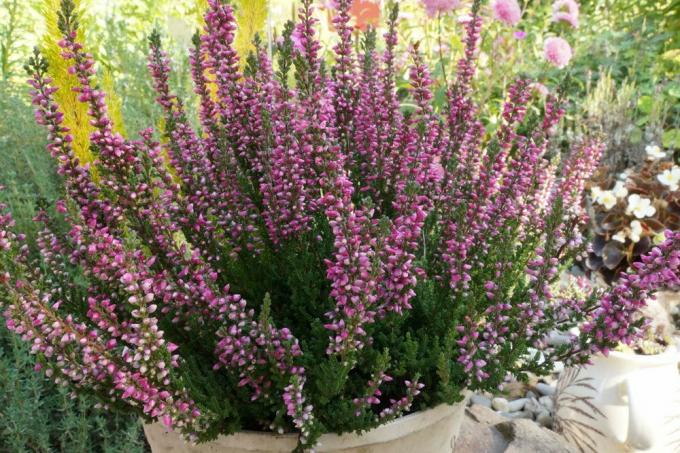
- Tulips (Tulipa) - can remain in the bed as a heavy eater
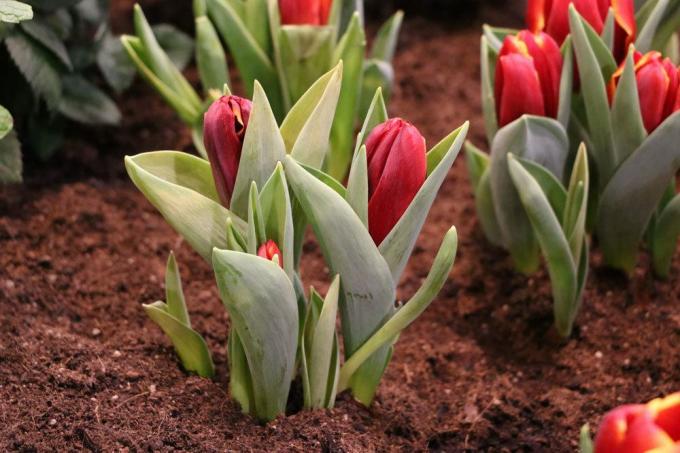
Tip: Once tulip bulbs have been planted, annual summer flowers should not be planted after they have bloomed, because they usually need to be kept evenly moist, but the tulip bulbs prefer drought.
First planting annual or perennial
As an initial planting of a raised bed, it is advisable to limit yourself mainly to annual plants. The high nutrient content in raised beds is enormously reduced in the first year by the heavy eaters, so that in the second year the soil / layers could be leached. Since the nutrient supply of a raised bed through the layers is "planned" for about five years, one would Long-term planting with heavy eaters lead to excessive soil pollution and the "lifespan" of the filling can shorten. It is therefore ideal to make sure when planting in the first year that the flowers and grasses are annual or several years can find a place in another bed, at least for the most part, in the following year, so that they are not disposed of have to.
Tip: Nevertheless, several highly consuming plants should be planted in the first year of planting and also in the second year remain, it is advisable to carry out a soil analysis in order to add fertilizer if necessary "relieve".
Start of planting
The planting year officially begins in May of each year. When the frost is over, you can start planting flowers and grasses from the ice saints. The ideal planting time is of course dependent on the individual plant species / varieties. The following list presents all the flowers that can be placed in the freshly layered raised bed in the first year of planting.
Heavily eating flower species
- Asters (aster)

- Chrysanthemums (Chrysanthemum)
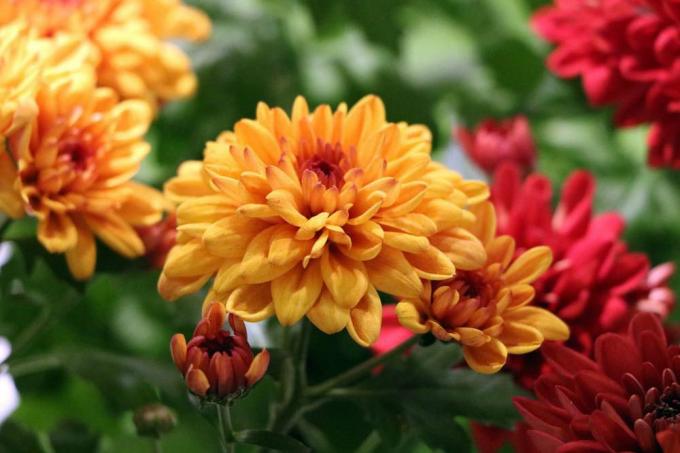
- Dahlias (Dahlia)
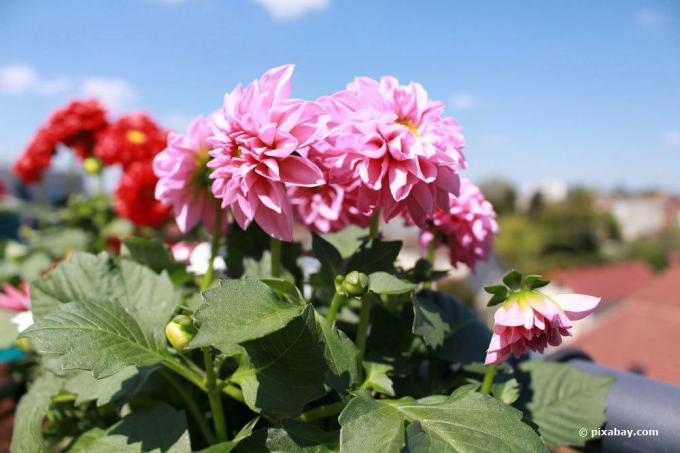
- Angel's Trumpets (Brugmansia)
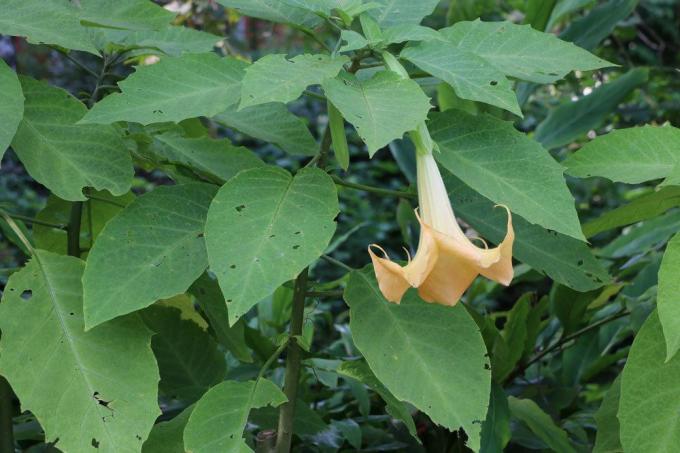
- Flame flower (phlox)

- Geranium / Pelargonium (Pelargonium)

- Montbretia (Crocosmia)
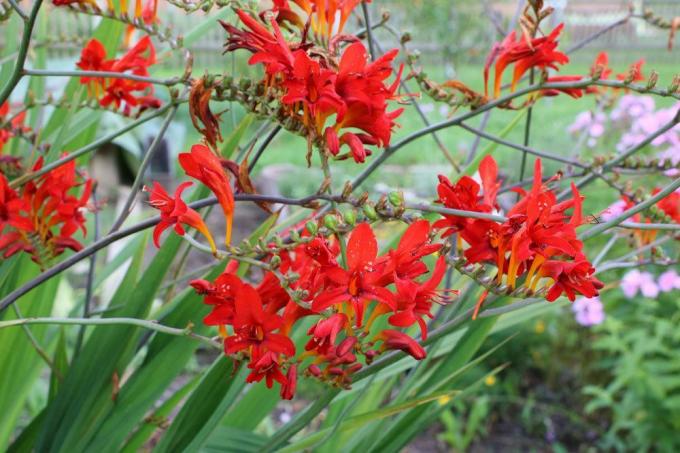
- Oleander (Nerium oleander)
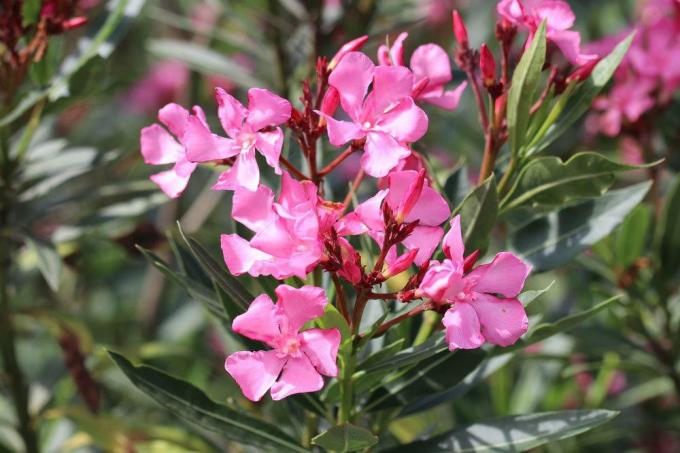
- Petunia (petunia)

- Delphinium

- Velvet flower / marigold (marigold)

- Sunflower (Helianthus annuus)
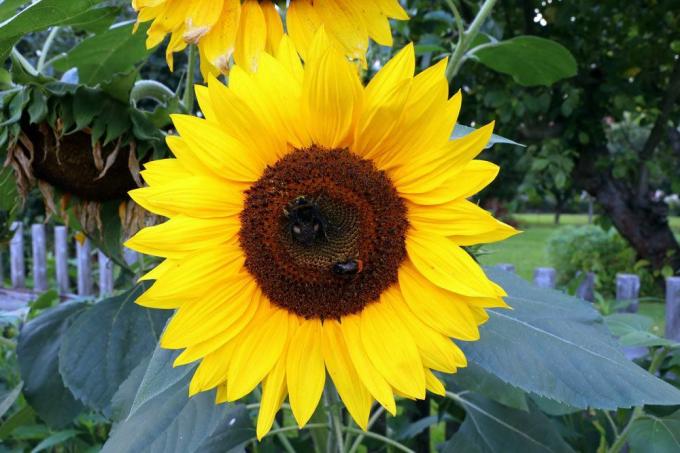
- Thorn apple (Datura) - Caution: highly poisonous
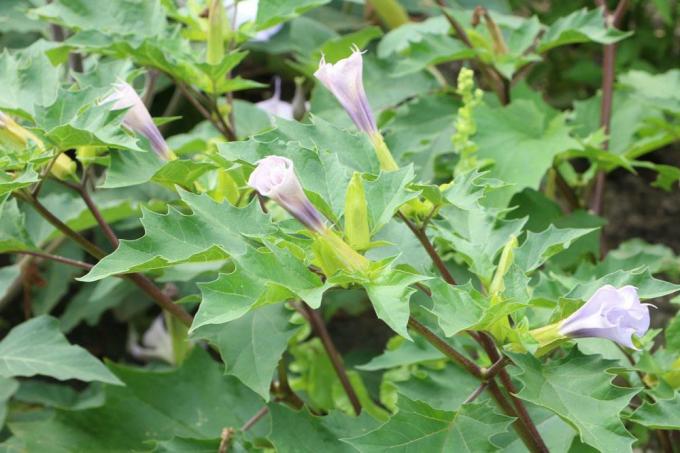
- Desert Tail (Eremurus)
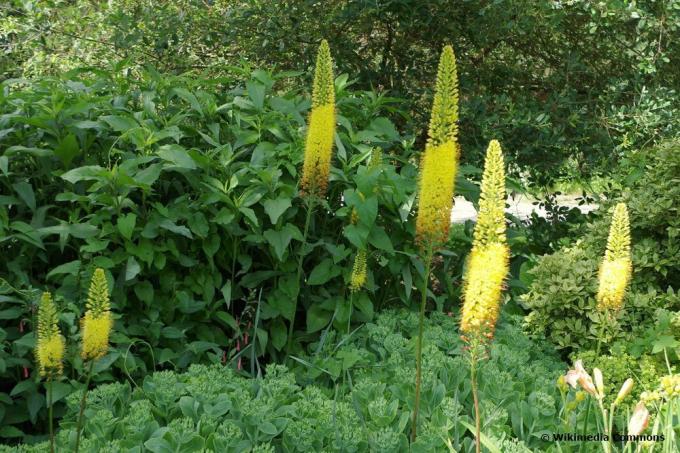
- Two teeth (Bidens)

Grasses for initial planting
Many types of grass offer an exciting, varied look in every flower-filled raised bed, but can also be planted in groups and form a great privacy screen. For the first planting in raised beds, however, the following types of grass fall under the heavy eaters:
- Bamboo species (Bambusoideae) - for a sunny location
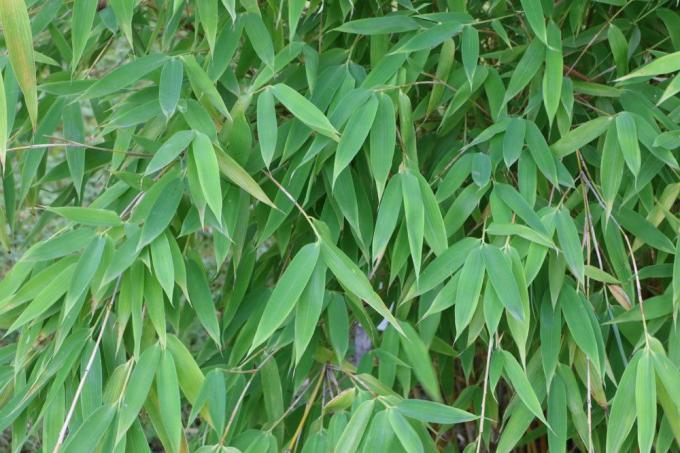
- Japan forest grasses (Hakonechloa makra) for partially shaded, shady locations

- Pennisetum alopecuroides - for sunny to partially shaded locations - not all varieties are hardy

- Magellanic blue grass (Elymus magellanicus) - for a sunny location

- Mosquito grass (Bouteloua gracilis) - for a sunny location

- Palmarosa sweet grass (Cymbopogon martinii) - for partially shaded, shady locations
- Citronella grass (Cymbopogon nardus) - for a sunny location
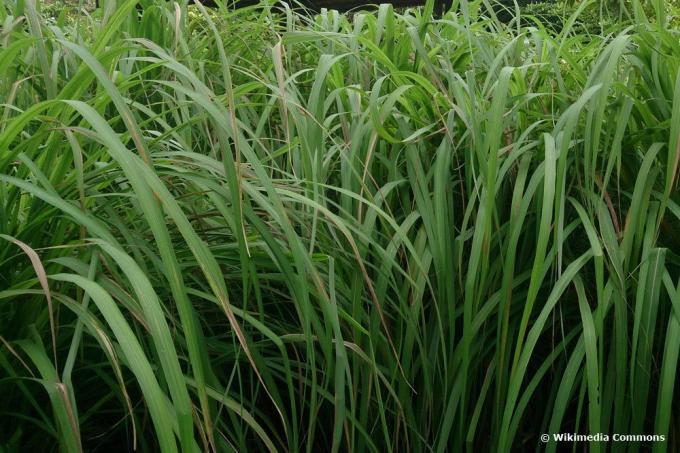
- Prairie grass (Schizachyrium scoparium) - for a sunny spot
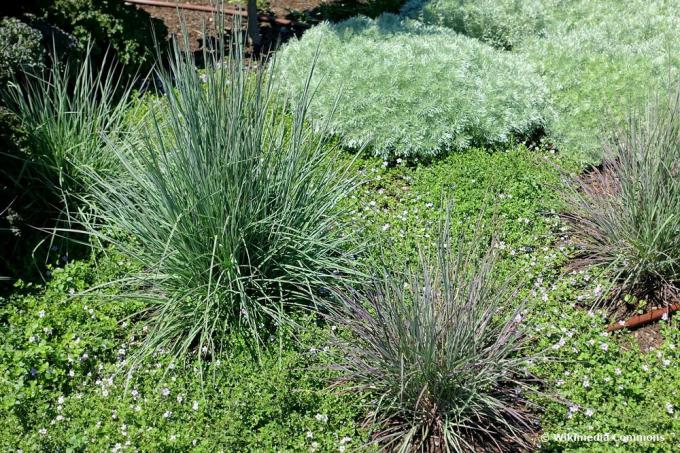
- Heron feather grass (Stipa barbata) - for a sunny location
- Sedges (Carex) - for partially shaded, shady locations
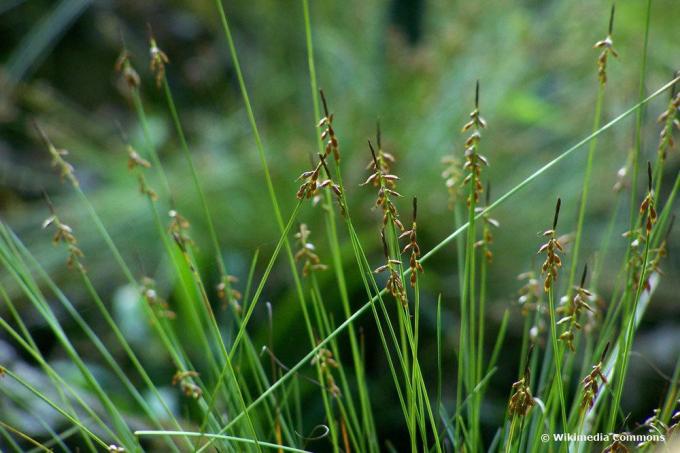
- Sedge grass / Indian nut grass (Cyperus rotundus) - for a sunny location - likes it moist
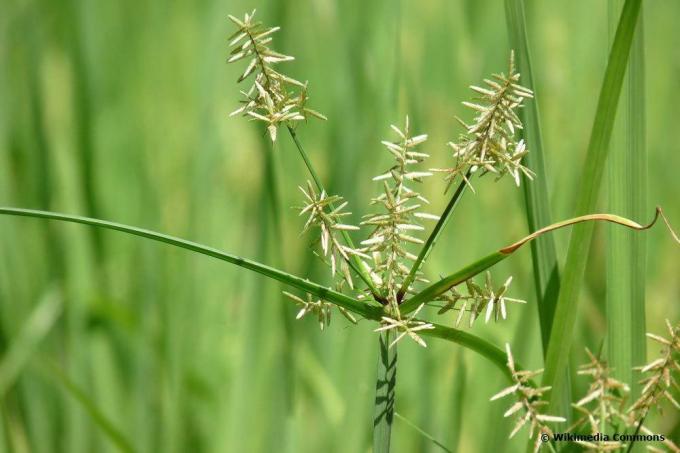
Mono- and mixed cultures
In theory, you can only plant a single favorite flower in a raised bed. If it is only a one-year planting, there is nothing to counteract it. However, if it is a perennial species, you should know the difference between mono and mixed culture in order to be able to make ideal decisions for the initial raised bed.
Monocultures
A planting that consists of a single type of flower is called a monoculture. That would be the case if, for example, you were only planting bamboo grasses. The disadvantage of a monoculture is that the plants are more susceptible to pests and diseases, especially infections. Fungi can also form more quickly in the layers, which under certain circumstances not only "attack" the plants, but also the wood material from which raised beds are often made. Experienced hobby gardeners and experts generally recommend considering a monoculture for raised beds only if another plant species replaces them in the following year at the latest.
Mixed cultures
A mixed culture is used when different types of plants are planted in one bed. For example, a combination of flowers and grasses are ideal for the initial planting of a raised bed, with a mix of different types of flowers making the ideal case. This is based on the fact that the risk of infestation is minimized by using several different plant species due to their different susceptibility to pests and diseases. In some cases they can also protect each other, for example if grasses snails Keep at a distance, who otherwise like to mess with the planted geraniums or asters do.

